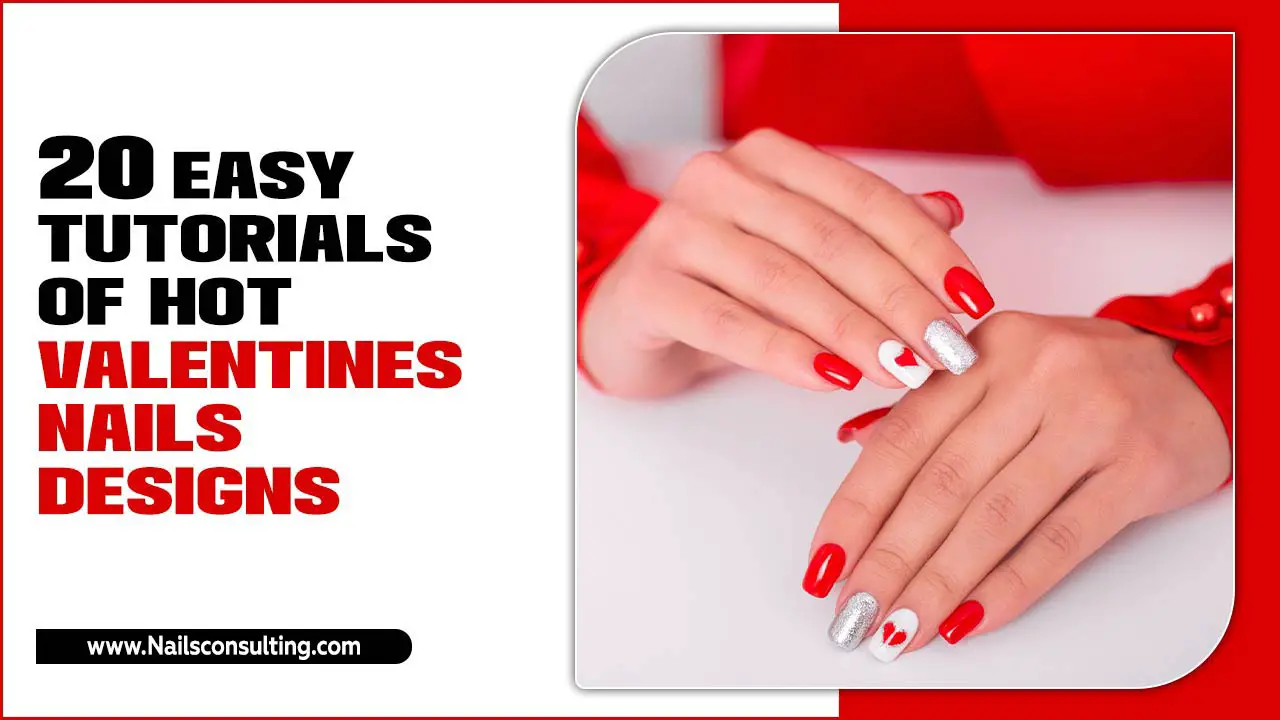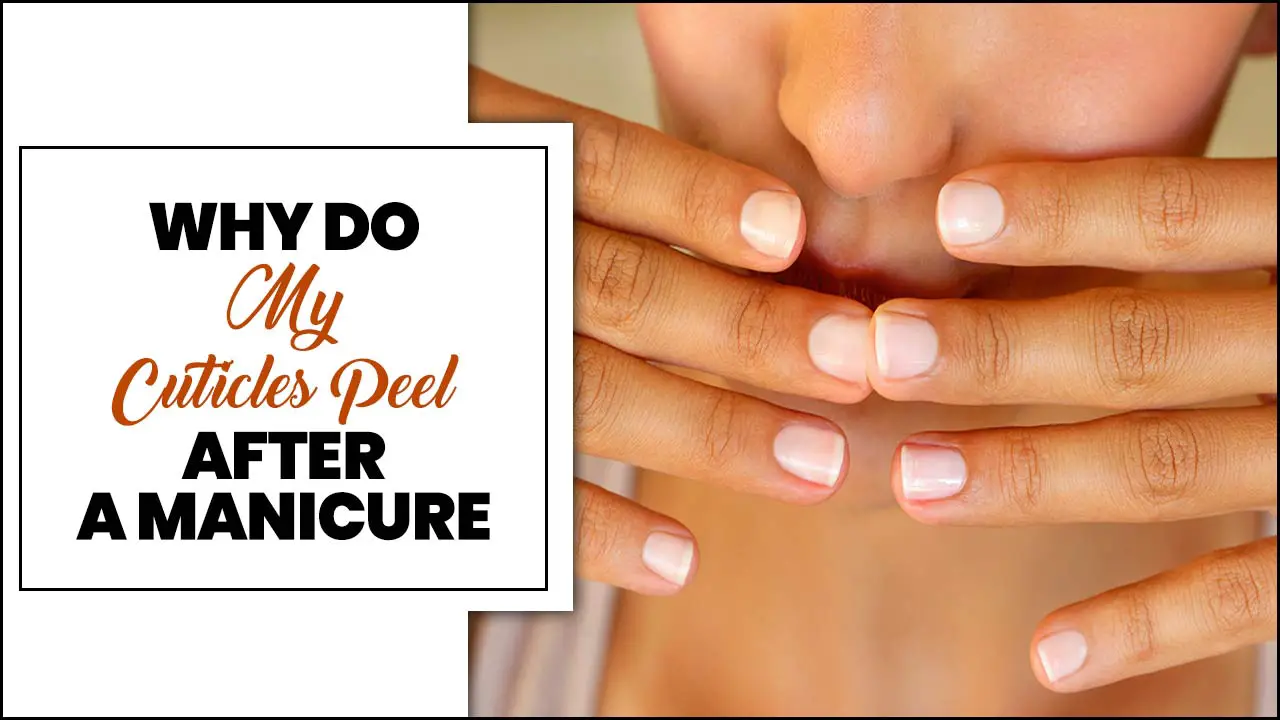Get gorgeous beach wave nails adorned with delicate seashells! This easy-to-follow guide provides essential tips for beginners to create stunning, ocean-inspired manicures at home, making your nails look like a beachy dream.
Dreaming of sun-kissed beaches and the gentle sound of waves, but can’t make it to paradise just yet? Bring the beach to your fingertips with the enchanting beauty of beach wave nail art featuring real or faux seashells! This trend is perfect for summer, vacations, or any time you want a touch of coastal charm. Many beginners find intricate nail art a bit daunting, but creating a beautiful beach look with seashells is surprisingly simple and incredibly rewarding. You don’t need to be a pro to achieve salon-worthy results. We’ll walk you through everything you need to know, from choosing the right colors to perfectly placing those tiny treasures. Get ready to dive into the world of chic, beachy nails!
Your Essential Beach Wave & Seashell Nail Art Toolkit
Before we start painting our way to the coast, let’s gather our supplies! Having the right tools makes all the difference when creating beach wave nail art with seashells. Don’t worry if you don’t have everything; many items are readily available, and some can even be improvised. The key is to have a good base to work from and the right applicators.
Must-Have Nail Polish Colors
The foundation of any great beach wave design is the right color palette. Think about the colors of the sea, sand, and sky! Blues, whites, sandy beiges, and even hints of coral are your best friends here.
- Ocean Blues: From deep navy to bright turquoise and shimmering aquamarine, these shades capture the vastness of the sea.
- Sandy Neutrals: Beige, cream, and light brown polishes mimic the warm sands.
- White and Cream: Perfect for creating foam, waves, and highlighting details.
- Coral and Peach: Add pops of warmer tones, reminiscent of sunsets or hidden shells.
- Glitter Polishes: A touch of iridescent or blue glitter can add that magical sparkle of sun on water.
Seashell Embellishments
This is where the magic happens! You have a few options for adding that authentic beach feel.
- Real Miniature Seashells: These are readily available online or at craft stores. Ensure they are very small and thoroughly cleaned.
- Faux Seashell Charms: Made from resin or plastic, these come in various shapes and sizes and are often easier to work with than real shells. They offer consistent sizing and a smooth finish.
- Seashell Stickers or Decals: A super easy option for beginners! These are pre-designed and simply adhere to your nails.
Applicators and Tools
Precision is key, especially when working with small embellishments.
- Base Coat: Essential for protecting your natural nails and helping polish adhere.
- Top Coat: Seals everything in and adds a glossy finish.
- Nail Polish in Your Chosen Colors: As listed above.
- Dotting Tools or Toothpicks: For creating small dots and lines for wave effects.
- Fine-Tip Nail Art Brush: For drawing delicate lines and details.
- Tweezers: Crucial for picking up and precisely placing seashells and charms.
- Nail Glue or Strong Top Coat: To secure your embellishments.
- Alcohol Wipes or Lint-Free Cloth: For cleaning your tools and nails.
- Cuticle Oil: To nourish your cuticles after the manicure.
Step-by-Step: Crafting Your Beach Wave Nail Art with Seashells
Let’s get creative! Follow these steps to create a beautiful beach wave nail art design with seashells. We’ll focus on a simple yet stunning technique perfect for beginners.
Step 1: Prep Your Canvas
A good manicure always starts with clean, prepped nails. This step ensures your polish lasts longer and looks professional.
- Clean Your Nails: Remove any old polish with a remover. Wash your hands thoroughly and dry them well.
- Shape Your Nails: File your nails into your desired shape. Gentle, consistent strokes are best.
- Push Back Cuticles: Gently push back your cuticles using a cuticle pusher or an orange stick. Avoid cutting them unless you are experienced, as this can lead to infections. For more on healthy cuticles, check out resources on proper nail care from the American Academy of Dermatology.
- Apply Base Coat: Apply a thin, even layer of your favorite base coat. Let it dry completely. This creates a smooth surface and prevents staining.
Step 2: Create the Beachy Base
This is where we build our beach scene. We’ll use a gradient or simple color blocking to mimic sand and sea.
Option A: Sand & Sea Gradient
- Apply Sand Color: Paint about two-thirds of your nail with your sandy beige polish. Let it dry.
- Apply Ocean Color: On a makeup sponge or nail art sponge, apply two stripes: one of your chosen blue polish and one of white.
- Gradient Effect: Gently dab the sponge onto the tip of your nail, blending the blue and white over the top edge of the sand color. You want to create a soft transition, like the sea meeting the sand.
- Build Up Color: Repeat the dabbing process if needed to achieve your desired opacity and blend. Let it dry thoroughly. A little patience here pays off!
Option B: Simple Color Block
- Paint the Free Edge: Paint the top tip of your nail with a light blue or white polish to represent the sea foam or wave crest.
- Fill the Rest: Paint the remaining part of your nail with a sandy beige or a softer ocean blue.
- Add Detail (Optional): Once dry, you can use a fine-tip brush or toothpick dipped in white polish to draw a subtle wave line between the colors or add a few white accents.
Step 3: Drawing the Beach Waves
Now, let’s add those iconic beach waves! This technique is all about fluid lines.
- Choose Your Wave Color: Typically, white or a very pale blue works best for creating the illusion of ocean waves.
- Create the Line: Using a fine-tip nail art brush or a dotting tool with a small ball, carefully draw a curved line across your nail. Imagine the gentle crest of a wave. You can make it a single dominant line or a few smaller, overlapping lines.
- Add Depth: For more realistic waves, you can add a second, slightly thinner line under the first one, using a slightly darker blue or even a touch of grey for subtle shading.
- Texture with Dotting: For a foamy effect, use a dotting tool to create small, uneven dots along the wave line.
- Let it Dry: Ensure these wave details are completely dry before moving on to the seashells.
Step 4: Placing Your Seashells
This is the most exciting part! Precision and a touch of artistic flair will make your seashells pop.
- Choose Placement: Decide where you want to place your seashell(s). Common spots are near the cuticle, on an accent nail, or as a main feature on one or two nails.
- Apply Adhesive: Apply a small bead of nail glue or a generous dot of your top coat polish to the exact spot where you want to place the shell. If using actual glue, work quickly as it dries fast.
- Pick Up the Shell: Using your clean, dry tweezers, gently pick up your chosen miniature seashell or charm.
- Position Carefully: Hover the shell over the adhesive and carefully place it onto your nail. Press down very gently with the tweezers or a silicone tool to ensure it adheres well without shifting.
- Add More (Optional): If you’re using multiple small shells or charms, repeat the process, leaving a little space between each for a balanced look. Avoid overcrowding the nail.
Step 5: Seal and Shine!
The final step is crucial for longevity and a professional finish.
- Apply Top Coat: Carefully apply a generous, even layer of top coat over your entire nail, making sure to cover the edges of the seashells. This will seal them in, add shine, and prevent them from snagging.
- Be Gentle: Be careful not to flood the area around the shells with too much top coat, which could obscure their detail. Try to brush around them if needed or use a smaller brush.
- Let it Cure: Allow the top coat to dry completely. This can take a few minutes depending on the product.
- Nourish Cuticles: Once everything is dry and hard, apply a drop of cuticle oil to each nail. Massage it in gently to rehydrate your skin.
Seashell Nail Art Variations & Pro Tips
Ready to take your beach wave nail art with seashells to the next level? Here are some ideas and expert tips to help you create even more stunning designs.
Playing with Texture and Finish
- Matte vs. Glossy: Try a matte top coat for a sophisticated, sandy finish. It can make the seashells look even more natural. Alternatively, a high-gloss top coat enhances the watery shimmer.
- Glitter Accents: Dust a fine iridescent or blue glitter over your wet blue polish before it dries to mimic the sparkle of sunlight on water.
- 3D Effects: For a truly dimensional look, consider using slightly larger faux shells or layering. Ensure they are securely adhered.
Color Combinations to Inspire
Here are some color palettes that scream “beach vacation”:
| Theme | Base Colors | Wave Colors | Seashell Accent |
|---|---|---|---|
| Tropical Sunset | Coral, Peach, Gold Shimmer | White, Light Orange | Faux white or tan shells |
| Deep Ocean | Navy Blue, Teal, Shimmer Blue | White, Light Blue | Iridescent or mother-of-pearl shells |
| Sandy Shore | Beige, Cream, Light Tan | White, Pale Yellow | Small natural shells, starfish charms |
| Miami Vibe | Aqua, Pink, Gold Glitter | White, Light Pink | Colorful faux shells, resin charms |
Tips for Using Real Seashells
While beautiful, real seashells require a bit more care.
- Size Matters: Always opt for the smallest shells you can find. Larger ones will be unwieldy and prone to falling off.
- Cleanliness is Key: Ensure any real shells are thoroughly washed and dried. You can boil them briefly to sterilize them.
- Smooth Edges: If any shell has sharp edges, gently file them down with a fine-grit nail file.
- Adhesion: Real shells can be trickier to adhere. A strong nail glue is often best, followed by a careful application of top coat around the edges.
Tips for Using Faux Seashells & Charms
These are often the easiest for beginners!
- Variety is the Spice: Faux shells and charms come in many shapes: conches, scallops, starfish, and more. Mix and match for visual interest.
- Lightweight Options: Many faux shells are made from lightweight resin, making them comfortable to wear and less likely to detach.
- Easy Placement: Their uniform shape and often pre-flattened bottom make them easier to adhere with nail glue or a thick top coat.
Ensuring Longevity
- Proper Sealing: This is non-negotiable! The top coat protects your design and shells from chipping and snagging.
- Avoid Harsh Chemicals: When cleaning or doing chores, wear gloves to protect your manicure from strong detergents and solvents.
- Gentle Handling: Be mindful of your nails, especially when opening cans or performing tasks that could snag your embellishments.
For more in-depth nail care advice, consider consulting resources like NHS UK’s guide to healthy nails.
Frequently Asked Questions (FAQ)
Q1: How do I make sure the seashells stay on my nails?
A: Use a good quality nail glue or a very thick, sticky top coat as your adhesive. Apply the glue/top coat to the nail where the shell will go, then carefully place the shell with tweezers. Press down gently. Finally, seal the shell with a generous layer of top coat, ensuring you cap all the edges to prevent lifting.
Q2: Can I use real seashells from the beach?
A: Yes, but make sure they are very small and thoroughly cleaned and sanitized. You might need to boil them briefly and let them dry completely. Also, gently file down any sharp edges before applying them to your nails to prevent scratching yourself or others. Faux shells are often easier for beginners!
Q3: What if I don’t have a fine-tip nail art brush for drawing waves?
A: No problem! A toothpick or the edge of a fine-tipped applicator tool can work just as well for drawing thin lines. You can also use the tip of a small dotting tool to create waves by making small, connected dots.
Q4: How do I avoid getting top coat on the details of the seashells?
A: Apply the top coat carefully, using light strokes and trying to go around the edges of the shell if possible. For very delicate shells, you might need a smaller brush, or you can use a magnifying lamp to help you see better. Ensure the shell is fully dry before applying the top coat.
Q5: My beach wave design looks messy. How can I make it cleaner?
A: Patience is key! Allow each layer of polish to dry completely before adding the next. For the waves, start with a simpler, single line and build up if you feel confident. Using quality brushes or tools meant for nail art can also significantly improve precision. Don’t be afraid to clean up any mistakes with a small brush dipped in nail polish remover.
Q6: How long does this type of nail art typically last?
A: With proper application and a good top coat, beach wave nail art with seashells can last anywhere from 5 to 10 days. The longevity depends on your nail type, how well you prepped and sealed the design, and how careful you are with your hands.
Q7: Can I use this technique on gel nails?
A: Absolutely! Gel polish provides an excellent, durable base. You can apply the beach wave colors and then adhere the seashells using a strong gel-based nail glue or an uncured gel color as adhesive. After placing the shells, you’ll need to apply a gel top coat and cure it under a UV/LED lamp to set everything.
Conclusion: Your Personal Beach Escape Awaits!
There you have it – your simple guide to creating beautiful beach wave nail art with seashells! We’ve covered everything from gathering your essential tools to mastering the waves and placing those precious embellishments. Remember, nail art is all about expressing yourself and having fun. Don’t be afraid to experiment with different color combinations, shell placements, and finishes. Whether you’re aiming for a subtle hint of the ocean or a full-on beach party on your fingertips, these tips will help you achieve stunning results. So grab your polishes, your tweezers, and your tiny treasures. It’s time to bring a little piece of paradise to your everyday life, one fabulous nail at a time. Happy polishing!



